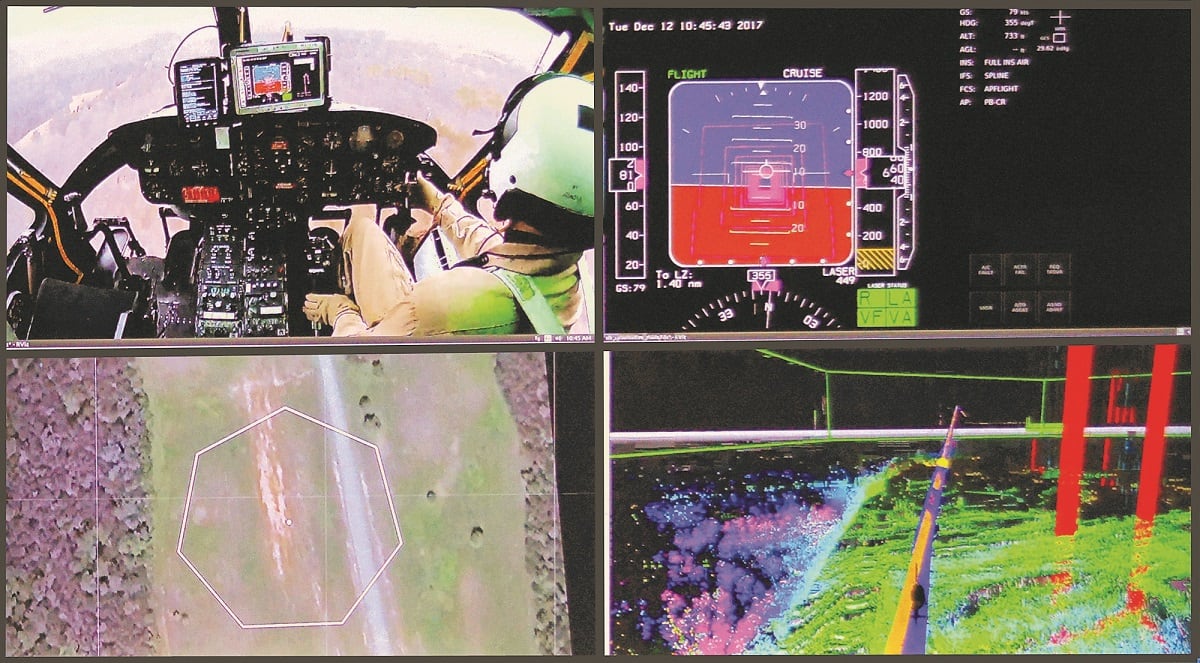An experimental logistics unit is headed to Twentynine Palms, California, for a nearly month-long exercise to test out a new suite of automated air and ground logistics systems that includes drones, a Huey and armored trucks.
While these Marines won’t be sporting slick new night vision and high-speed ops-core helmets, they will be testing a slew of automated air and ground vehicles like UH-1H Huey aircraft and the Oshkosh LVSR trucks with installed kits that allow them to operate without pilots or drivers.
During the exercise that kicks of Tuesday, small drones will provide surveillance and intelligence collection for tactical convoys while air and ground unmanned logistics systems will test the feasibility of these systems to sustain forward deployed ground combat units, according to 1st Lt. James Paradise, a Marine with Headquarters and Service Company, Combat Logistics Battalion 8.
Known as Command Logistics Battalion 8, or CLB-8, stationed out of Camp Lejeune, North Carolina, the experimental unit is a runoff off last year’s Sea Dragon 2025 exercises that kitted infantry Marines with the latest and greatest tech. Now the Corps is focused on futuristic ways to supply its forward deployed forces should a greater conflict arise.
“The purpose is to evaluate the ability of a MAGTF [Marine Air-Ground Task Force] to conduct hybrid logistics, enabled by experimental technologies, in order to inform decisions regarding manning and organization of the 2025 Logistics Combat Element (LCE), make recommendations on investments in future technology systems, provide input on tactics, techniques and procedures for employment of emerging hybrid logistics technologies, and make recommendations for future hybrid logistics experimentation,” said Maj. Justin Sumner, branch head, field testing branch with the Marine Corps Warfighting Laboratory.

Marines with the experimental unit will also test a series of smart systems that can rapidly inform commanders of logistics needs like the Logistics In Transit Visibility, or LogITV, and the Joint Operational Energy Command and Control, or JOEC2 platform.
“LogITV is a combination of systems that enable a greater understanding of respective logistics postures that enable more informed decision making, Paradise said.
“JOEC2 is a mobile network target platform, located within combat vehicles, tactical refuelers and bulk fuel tankers that provide real-time refueling data to the COC [combat operations center].”
The Corps also plans to further test its 3-D printing capability with two systems on site to print spare parts and repairs during the exercise.
CLB-8 has already carried out two large scale exercises and after this iteration they’ll be packing their bags for Norway to participate in a NATO exercise this fall called Trident Juncture, which Commandant of the Marine Corps Gen. Robert B. Neller described before lawmakers in early March as one of the largest and first of its kind.
“This exercise will serve as the culminating event to evaluate the ability of the MAGTF Logistics Combat Element (LCE) to conduct hybrid logistics,” Sumner explained.
Roughly 35,000 troops from 20 countries will be involved.
“MCWL’s [Marine Corps Warfighting Laboratory] principal objective is to conduct experimentation during the combined amphibious and expeditionary operations under a NATO architecture in a peer-peer major contingency operation in the European Command Area of Responsibility — to inform the expeditionary (hybrid) logistics line of effort,” Sumner said.
The logistics experimentation will conclude sometime in early 2019 with an event hosted by the Marine Warfighting Lab that will involve key personnel and those involved in the experiment to discuss lessons learned and recommendations to the commandant.
Shawn Snow is the senior reporter for Marine Corps Times and a Marine Corps veteran.





